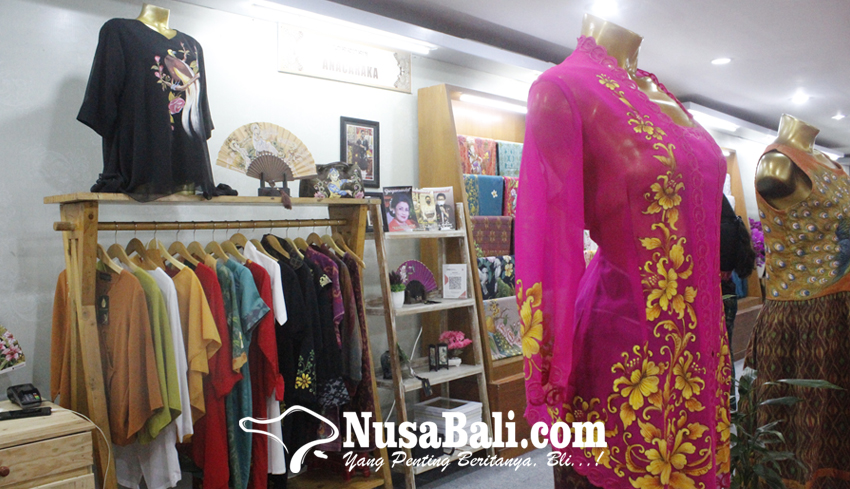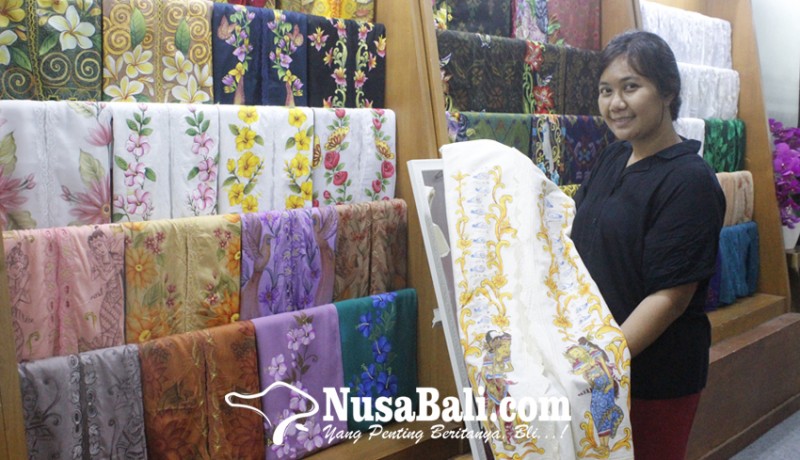Painted Kebaya, Cherishing Heritage through Innovation
DENPASAR, NusaBali.com – Kebaya is a magnificent heritage for Indonesia women. The clothing has been preserved for centuries and became a national costume in 1978. Now, it remains a prima donna for the generation, cherished in many ways, and giving a touch of paint is one of the many.
Kebaya is known for its unique look. It has an open model at the front (quite similar to a blouse but made of lightweight fabrics) that is secured with buttons or pins, some other models have fabrics connecting the two ends of the open model.
Indonesian women occasionally wear kebaya as an upper garment with batik dan tenun fabrics for its lower garment. This glorious heritage is cherished in many ways, like Dayu Harmaita, 31, owner of Anacaraka boutique who chooses to paint part of her longstanding nation’s legacy.
“I started Anacaraka boutique as a business plan in 2012, part of my college assignment,” she told NusaBali.com on Monday (28/11/2022) in a year-long exhibition at Bali’s Arts Centre in Denpasar.
The economy major graduate explains that the boutique begins with unisex models and painted t-shirt-only products. After engaging with customers, she found that more female buyers favor her products.
At the same time, the local government stipulated a regulation about putting on Balinese traditional costumes every Thursday at work in government and private offices in Bali.
Indonesian women occasionally wear kebaya as an upper garment with batik dan tenun fabrics for its lower garment. This glorious heritage is cherished in many ways, like Dayu Harmaita, 31, owner of Anacaraka boutique who chooses to paint part of her longstanding nation’s legacy.
“I started Anacaraka boutique as a business plan in 2012, part of my college assignment,” she told NusaBali.com on Monday (28/11/2022) in a year-long exhibition at Bali’s Arts Centre in Denpasar.
The economy major graduate explains that the boutique begins with unisex models and painted t-shirt-only products. After engaging with customers, she found that more female buyers favor her products.
At the same time, the local government stipulated a regulation about putting on Balinese traditional costumes every Thursday at work in government and private offices in Bali.
“And that was where it all started, we shifted from unisex to women-only clothing. But the fundamental concept remained there, the painting, now we paint on fabrics for kebaya, mostly on chiffon, gauze, and cotton,” a Singapadu, Sukawati-born youngpreneur explained.
 Image: Anacaraka booth at Bali's Arts Centre exhibition. -NGURAH RATNADI
Image: Anacaraka booth at Bali's Arts Centre exhibition. -NGURAH RATNADIMost paintings come from Balinese style floral and patras (ornament), contemporary figures, and Hindu mythology. With textile paints, Dayu produces painted fabrics for kebaya and ready-to-wear clothing worth hundreds to billions of rupiah.
The painted fabrics are mostly favored by outside Bali market so Dayu often ships her products to Java and other parts of Indonesia. However, Bali’s local market is deemed on the rise too.
“I expect to open class for garment painting in our workshop in Singapadu, so the customers can experience how we produce and treat our products,” she said, outlooking the future development of the business.
Furthermore, Dayu hopes to introduce kebaya more to kids. She wants to make the future generation aware of their clothing culture and proud to preserve it by wearing it. *rat






Komentar